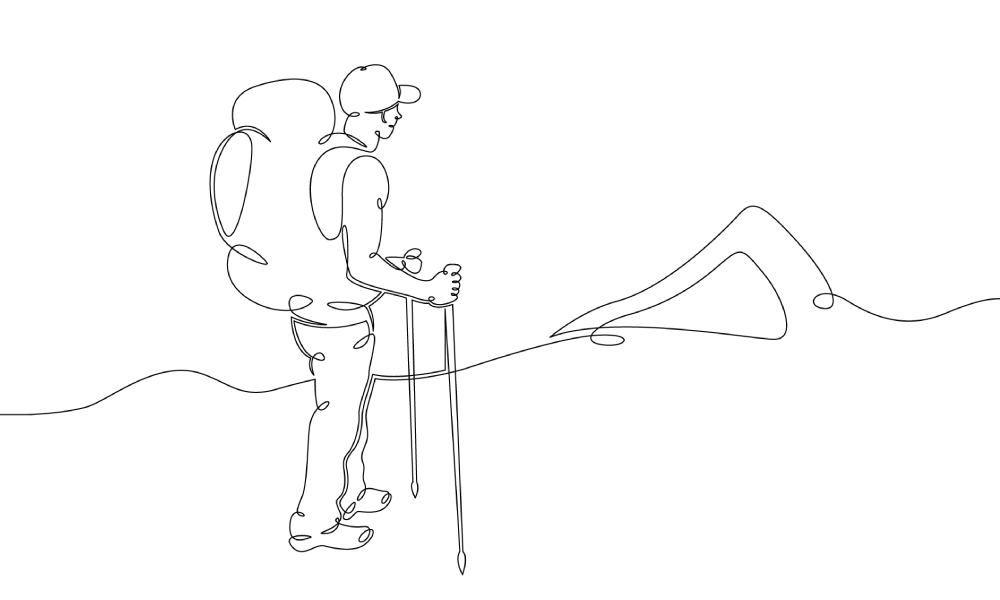A Day-by-Day Guide for Quitting Weed

The Weedless Guide
The Weedless Guide is for anyone that uses marijuana and wants to stop or reduce. Whether this is your first attempt, or you’ve tried many times before, whether you use infrequently or every day, everyone can use some help when it comes to breaking habits.
This Guide will provide daily messages on a variety of topics relating to quitting marijuana with the goal of making this period go as smoothly as possible, while also hopefully making you feel a little less alone during the process. Specifically, The Guide will help explain and contextualize many of your withdrawal symptoms on a daily basis, while also providing you tips to work through them. Lastly, this Guide will introduce strategies for managing cravings and for coping with life stressors once you’re no longer high.
The Weedless Guide surveys scientific research and first-hand accounts to provide a general timeline of typical withdrawal symptoms. Your experience with withdrawal is influenced by how much and how long you’ve used as well as a host of biological and psychosocial factors that make your experience wholly unique. So, use this as a general outline to mentally prepare yourself, but don’t be alarmed if your experience is a little different.
Preparing to Quit or Reduce
 Making the decision to stop using marijuana is the first major step on the path to getting clean. If you’re like many, you’ve probably contemplated quitting in the past. Being here means you’re a little closer than before, and this is progress.
Making the decision to stop using marijuana is the first major step on the path to getting clean. If you’re like many, you’ve probably contemplated quitting in the past. Being here means you’re a little closer than before, and this is progress.
Quitting won’t be easy—it will take commitment, strength, and resolve. We have faith in you, and we hope you do too.
The first step is picking a date to start. Maybe it’s today, maybe it’s a few weeks from now. Once you pick, though, stick to it. As that day approaches, it probably won’t feel like the right time. It never will. Trust your original instincts and start.
When are you planning to quit?
In preparation for this day, get rid of all your marijuana—your smokables, edibles, vapes, everything. It will be all the more tempting and a lot easier to relapse if you have it readily accessible. Also get rid of your paraphernalia. Anything that is directly related to your habit can serve as a trigger, and these can be especially potent in the early days.
Did you throw away all of your marijuana?
Defining your Goals
 The next step is to define your goals. This may seem trivial to some, but it can serve as a powerful motivator later on during the cessation process.
The next step is to define your goals. This may seem trivial to some, but it can serve as a powerful motivator later on during the cessation process.
Why do you want to quit? What’s not working that you want to change? What’s missing in your life that you want to achieve?
Write these down or keep them in the back of your mind. You may want to call on them later.
What to Expect During Withdrawal
 The first days and weeks after quitting marijuana can be a rollercoaster of thoughts, physical symptoms, and emotions. You will experience a range of withdrawal symptoms and also be confronted with everyday stressors that may feel like an entirely new experience now that you’re not high.
The first days and weeks after quitting marijuana can be a rollercoaster of thoughts, physical symptoms, and emotions. You will experience a range of withdrawal symptoms and also be confronted with everyday stressors that may feel like an entirely new experience now that you’re not high.
Your experience with withdrawal is influenced by how much and how long you’ve used as biological and psychosocial factors that make your experience wholly unique. So, use this as a general outline to mentally prepare yourself, but don’t be alarmed if your experience is a little different.
The first week is usually the most difficult in terms of withdrawal, with symptoms typically peaking in intensity at 2-3 days after cessation. In the first few days, you can expect to experience difficulty sleeping, difficulty concentrating, and irritability or anxiety. The latter half of the week may be marked by sweating, chills, GI upset and lack of appetite, as well as a continuation of the prior symptoms. It’s also critical to anticipate intense and sporadic cravings, especially as you adapt your routine to avoid triggers.
The second week will have many of the same symptoms as the first, but much less intense. The flu-like symptoms, if you experienced them, should also dissipate quickly. Many individuals also start experiencing some depressive symptoms. And cravings, of course, continue. By weeks three and four, the most pronounced symptoms that persist are insomnia, depression/anxiety, and mental haziness.
This is not meant to scare you, but rather to inform you. It’s always good to be prepared. We will take you through each of these symptoms and explain why they’re happening, so you don’t feel totally left in the dark.
Anticipating the Benefits
 Anticipating the benefits during the cessation period is equally if not more important than expecting the negative symptoms. Even during intense withdrawal, there will be glimpses of why this decision was the right one. Perhaps the earliest upside you’ll experience is the money you save. You’ll witness this almost immediately.
Anticipating the benefits during the cessation period is equally if not more important than expecting the negative symptoms. Even during intense withdrawal, there will be glimpses of why this decision was the right one. Perhaps the earliest upside you’ll experience is the money you save. You’ll witness this almost immediately.
As you adapt your life around not smoking, you’ll also find new meaningful hobbies to fill the time you spent using marijuana. You will start to feel healthier and have more energy. You will begin to view life through a clear lens and have the motivation to achieve things you may have passed on when you used. But overall, the benefits you experience will be unique to you. You’ll start to realize the goals you set out to achieve, and that will feel so incredibly gratifying. You’re the one that’s going to get yourself through this, and after it’s through, you’ll be able to rely on yourself to achieve anything.

Are you a regular marijuana user that has recently stopped using?
Currently, little data exists on heavy marijuana use and withdrawal. Weedless.org is collaborating with researchers to explore this topic and others. We have created a short, completely anonymous questionnaire which we will use to focus our future research efforts. You may skip any questions that make you feel uncomfortable and you are free to withdraw at any time. At the end of the survey, you will be given the option to anonymously share your responses with the Weedless.org community.
